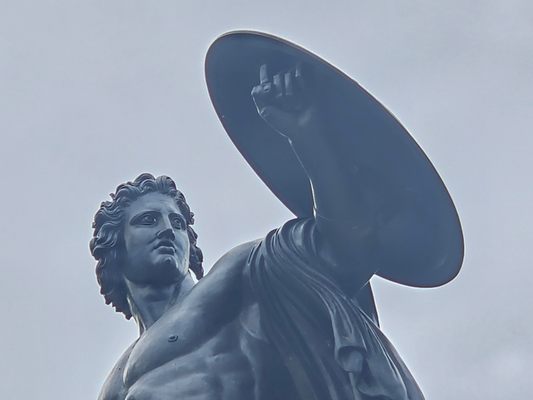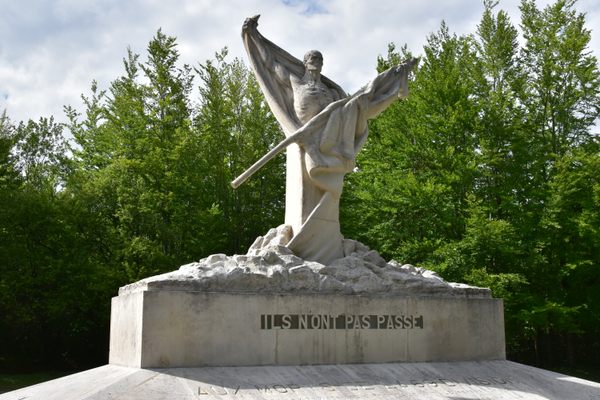About
Following his victory against Napoleon at the Battle of Waterloo in 1815, no man in Britain was more respected or more lauded than Arthur Wellesley, 1st Duke of Wellington. Titles and lands were bestowed upon the hero, and monuments were erected in his honor and in recognition of the men who fought with him.
Shortly after Waterloo, a patriotic, upper-class society known as Ladies of England commissioned a statue of Wellington on behalf of the nation’s women. They turned to the acclaimed sculptor Richard Westmacott, who cast the statue out of 33 tonnes of bronze from enemy cannons captured in the Battles of Salamanca (1812), Vitoria (1813), Toulouse (1814) and Waterloo.
The monument was unveiled in Hyde Park on June 18, 1822. It was an 18-foot-tall statue of Achilles, modeled on a Roman figure on Monte Cavallo in Italy, with the head based on the Duke himself.
It was also completely naked (Achilles' armor rests by his right leg), becoming London’s first public nude statue. And it was soon mired in scandal. As the author of Tour of a Foreigner in England put it at the time: “A great outcry has been raised against the undraped figure of Achilles."
You can only imagine the reaction from the Ladies of England, who had inadvertently (or so they claimed) funded what for many was a frightfully lewd statue of a young, muscular man with his bronze bits on display for all to see in Hyde Park. With decency and decorum at stake, the sculptor was promptly asked to add a small fig leaf to his statue, so as to spare the blushes of London’s impressionable ladies. He obliged, and the controversial part was covered up.
But the statue still had plenty of critics, and their complaints were not concerned with public dignity. For them, the statue was just a bit too confused. It was Wellington but it was Achilles. It was Achilles but appeared more like Adonis. And some simply argued that the shield held aloft by the statue was far too small to be that of Achilles, or of a hoplite shield of Ancient Greece.
Perhaps a more important criticism was raised by the British caricaturist George Cruikshank, who lampooned the statue in 1822. He pointed out that Wellington was a member of the government at the time, and argued that it was inappropriate that resources, public or private, should be devoted to projects like this, especially at a time when the country was in distress and people were starving. Which does seem slightly more important than a tiny bronze penis in a public park.
Related Tags
Know Before You Go
The Wellington Monument, also known as the Statue of Achilles, is located in the southeast corner of Hyde Park, just off Park Lane and Achilles Way in Central London. It’s near the Queen Elizabeth Gate at Hyde Park Corner.
Community Contributors
Added By
Published
November 11, 2019
Sources
- https://www.british-history.ac.uk/old-new-london/vol4/pp375-405
- https://hawksites.newpaltz.edu/virtuallylondon/2015/12/16/the-achilles-statue-wellington-monument/
- https://www.royalparks.org.uk/parks/hyde-park/things-to-see-and-do/memorials,-fountains-and-statues/statue-of-achilles
- http://www.speel.me.uk/sculptlondon/hydeparkachilles.htm
- https://www.iwm.org.uk/memorials/item/memorial/11528
- https://www.futurelearn.com/courses/wellington-and-waterloo/0/steps/24876















































